Dead Space is a survival horror third-person shooter video game, developed by EA Redwood Shores for PlayStation 3, Xbox 360 and Microsoft Windows released in October 2008. The player takes on the role of an engineer named Isaac Clarke, who battles a polymorphic, virus-like, alien infestation which turns humans into grotesque alien monsters called “Necromorphs”, on board a stricken interstellar mining ship named the USG Ishimura. It was revealed in September 2009 that Dead Space 2 is in pre-production.
Pre-production work on Dead Space 2 has only been official for less than six months, but it was never in serious doubt. Isaac Clarke’s first encounter with the alien virus that created the necromorphs was a hugely atmospheric blend of action shooter, with grim tones of survival horror. Admittedly, it was a survival horror in which you had enough bullets, and the exposition was clumsy. If we were dying, we’re not certain we’d use our blood to scrawl “Shoot off their limbs” on a nearby wall.
Discovering that you can only survive on a deserted spaceship by severing the limbs of members of your own mutated species can leave a man scarred, and Isaac was certainly affected by his time on board the Ishimura. Over the three years that have elapsed since the first game, he’s transformed from a faceless engineer with great aim and a snazzy line in helmets into a committed soldier, dedicated to killing necromorphs. That’s why he finds himself in the Sprawl, a mining colony in the Rings of Saturn that’s flourished into a cosmopolitan must-visit space destination.
There are three areas currently on display. You spend some time in The Church of Unitology, the religious cult that was behind the illegal operating front in the first game, and the reason the Ishimura’s crew went down with a severe case of post-life aggression. For a space cult, they’re pretty old-school, with a fondness for candles that’d embarrass a goth. Another striking scene is the entrance into the city on an elevator: the breathtaking ascent interrupted briefly when our companion has his breath literally taken from him, as a bloated necromorph tears him to shreds.
New mutations require new methods of brutal dispatch. The defining weapon of the first game was the Plasma Cutter, which was best aimed at the arms and legs of the necromorphs. Blow their legs off, and they’ll find it significantly harder to reach you – and if they start dragging themselves over to you with their arms, lightly sever those, too. One of the new weapons on display is the javelin gun, which pins necromorphs to the wall like a biology experiment, allowing you to vivisect them at leisure. This weapon won’t be so effective against the mutated baby monsters, however. Known as The Pack, they attack in groups, making your javelin an unworkably slow solution. Might we suggest sir uses the flamethrower?
Secondary fire modes add variety: with the classic severing gun you could rotate the barrel, allowing you to aim more effectively at removing legs and arms. The javelin can be charged with electricity, saving you the bother of dismemberment, by frying the necromorph into a screaming wall-mounted firework.
The final scene we’re shown is equally dramatic: an errant blast from a plasma rifle shatters one of the outside-facing windows, creating an instant and lethal depressurization. Everything is sucked towards the window, and Isaac only has a short opportunity to blast the safety shutters down, before he’s flung into space. Happily, during this demo he’s allowed to float outside. Luckily, the shutters trigger automatically. On a less positive note, Isaac’s halfway out the window and is chopped in half. It’s possibly an apt time to mention that the guy from Visceral let the bloated alien from the second scene pull Isaac’s arms off. Anyone would think he didn’t like the guy.
These set-pieces are being dubbed “epic moments” by Visceral, and every chapter of the story will be punctuated by at least one. If you’re not getting sucked out of a window and chopped in half, you’ll be fighting huge bosses from the inside (see also: Lost Planet 2), and standing on top of a high-speed train, fending off waves of necrotised human flesh. On one hand, it’s a compromise in terms of pure, oppressive terror. On the other, it gives you a chance to add the occasional “whoo-hoo” to your well-rehearsed repertoire of “uh-oh” and “shitshitshit.”
One of the design elements that made Dead Space such an immersive experience was the genuine lack of a HUD. It’s something of a developer cliche to claim that you’re “minimising the HUD,” but Dead Space did it with genuine style, working every last bit of information into the objects and technology of the game. Video logs, communication with your surviving team members, and operating your inventory was all done through in-world holograms. The action doesn’t pause for you to sort out your ammo, and nowhere was designated a safe place. That’s all still in place – all the important information is still tucked discreetly away.
The anti-gravity moments from the first game have changed too. In the first game, you barnacled yourself to a wall, and pushed in a direction, using your unguided flight path to spin around and shoot necromorphs who were travelling in similar straight lines. Since then Isaac has picked up a jet pack with a set of jet boots. It’s not going to turn the game into a Dark Void Rocketman affair, but it does give you enough power to guide yourself through zero-G bits.
This means Isaac’s travels around the Sprawl are a more open affair than the optionless tram system that ruled your progress through the slightly-too-similar areas of the Ishimura. That’s the greatest source of improvement in Dead Space 2’s new setting: variety. A just-begun thriving city offers locations far more interesting than a bridge, shuttle bay, and crew quarters. And its location – the Rings of Saturn, for Christ sakes! – makes for an infinitely wider array of settings.
Spacewalking across walkways is pretty much to be expected, but fixing up a solar array on the surface of a planet that’s been cracked open with lasers, and mined for resources? That sounds like whole new league. The defining mood of the first game was isolation – haunting space loneliness. You had contact with the two surviving crewmates from the Kellion, but mainly it was video logs from the dead, and a positively frosty welcome from their corpses. The sequel has Isaac being more human by dealing with people – we’re early enough in the viral cycle to have pockets of desperate survivors on the Sprawl.
Guiding squads of survivors around would be a radical change of tone, and Visceral Games are cautious about suggesting this is a new direction. Dead Space 2, they say, will primarily be about Issac Clarke fighting the alien living dead by himself. But dealing with real people might give the game an extra dimension, and it certainly gives Clarke a reason to take his helmet off more often. The constant looming threat of the first game is now tempered with regular moments of what street urchins might call “kickassery” – tension-breaking moments in which you’re empowered with the ability to blow all shades of shit right up.
What Visceral are doing with Dead Space 2 appears to be taking it in a more cinematic direction, with new ways for the necromorphs to pervert the human form and unsettle the player, and more balancing moments to throw the points of tension into relief. We’re looking forward to seeing how a world with more survivors and locations works out. It’s got the potential to ruin the mood of the franchise, for sure, but it could also blow the game open into exciting new territories.
Source: Gamesradar

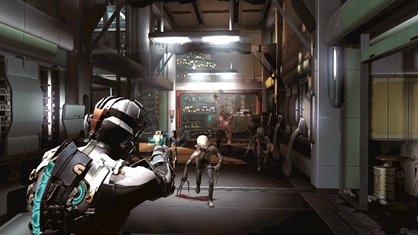
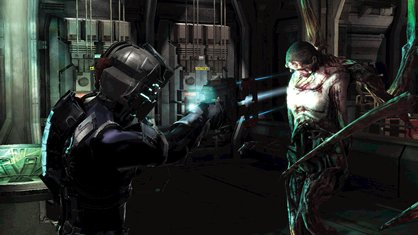
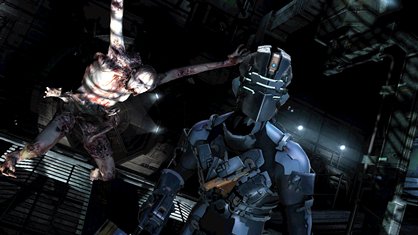
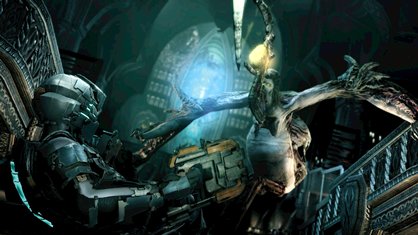
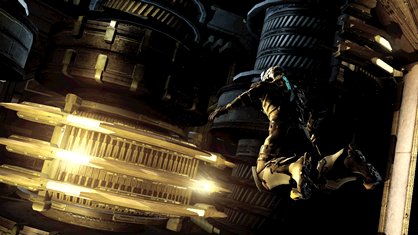
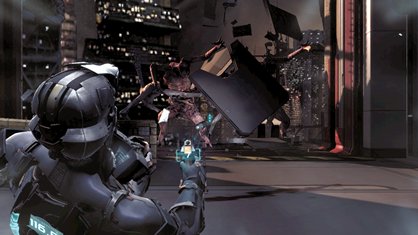
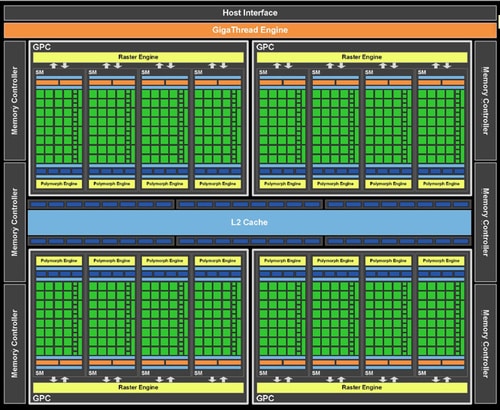

Pingback: hhjyr